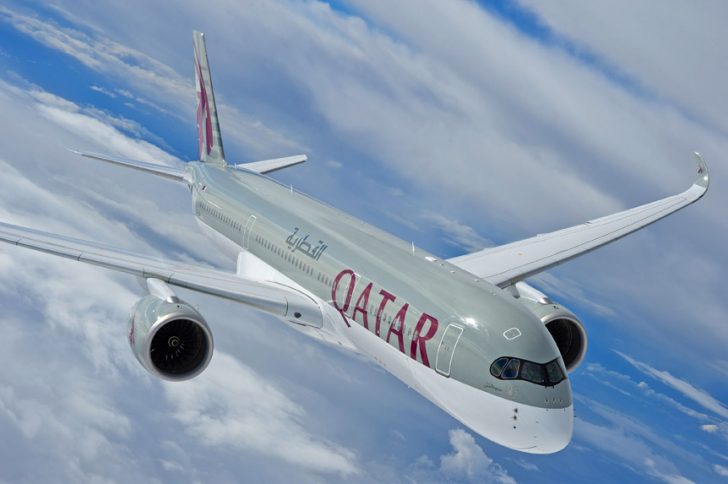Aerospace
Qatar Airways to launch domestic airline in India, Bengaluru to likely serve as hub

New Delhi, Apr 25: Qatar Airways, a state-owned enterprise of the middle eastern nation, has decided to operate a domestic carrier in India. The airliner will be applying with the Qatar investment authority (QIA) for an operating licence within the next few weeks.
The proposed domestic carrier would be owned majorly by the Qatar Investment Authority, with Qatar Airways have a minor share of 49 per cent. The fleet will consist of will consist of approximately 100 aircraft.
According to a report by Reuters, the airline’s Chief Executive, Akbar al-Baker, told reporters in Dubai that aircraft manufacturers like Airbus, Boeing, Bombardier and Embraer would be welcome to bid for orders from the proposed Indian carrier.
In preparation for the launch, officials from Qatar have been scouting various airports across India. One airport will be selected to serve as the carrier’s hub. The Ministry of Civil Aviation has already conveyed this message to major airports in India, including Mumbai, Bengaluru and Delhi.
However, informal signals indicate that the airline has already zeroed in on Bengaluru’s Kempegowda International Airport, to serve as its national hub. The successful launch of Qatar Airways’ domestic Indian carrier, would make it the first 100 per cent foreign owned airline in India.
Meanwhile, rival middle-eastern airline, Etihad Airways, already enjoys significant gains from the Indian airline industry. The UAE-based carrier has a significant stake of 49 per cent in the India-based Jet Airways. Etihad Airways had initially acquired 24% stake in Jet Airways for $349 million in 2013 which it almost doubled in 2016.

Aerospace
Boeing Transfers Rocket Stage to NASA, Paving Way for Human Moon Mission

Boeing has achieved a significant milestone by providing NASA with the second core stage of the Space Launch System (SLS) rocket.
This crucial component, crafted at NASA’s Michoud Assembly Facility (MAF), is set to propel the Artemis II crew into lunar orbit, marking humanity’s return to deep space after a 50-year hiatus.
The monumental Boeing-built rocket stage, the largest element of the Artemis II mission, will embark on a journey aboard the Pegasus barge, traveling 900 miles to NASA’s Kennedy Space Center.
Comparison of two legendary aircraft B777x vs B747 aircraft:Click here
Upon arrival, it will be meticulously integrated with other essential Artemis II components, including the upper stage, solid rocket boosters, and NASA’s Orion spacecraft within the iconic Vehicle Assembly Building. This intricate integration process is a vital step toward the eagerly anticipated Artemis II launch, slated for 2025.
“Boeing-built products helped land humankind on the moon in 1969, and we’re proud to continue that legacy through the Artemis generation,” remarked Dave Dutcher, vice president and program manager for Boeing’s SLS program. “Together, with NASA and our industry partners and suppliers, we are building the world’s most capable rocket and paving the way to deep space through America’s rocket factory in New Orleans.”
NASA, Lockheed Martin Reveal X-59 Quiet Supersonic Aircraft:Click here
The delivery of Core Stage 2 marks a significant achievement in the evolution of the SLS rocket. Towering over 200 feet and powered by four RS-25 engines, this core stage, coupled with two solid-fueled booster rockets, will generate a staggering 8.8 million pounds of thrust. This immense power is crucial to launching Artemis II and future missions into the vast expanse of space.
The SLS rocket stands unparalleled in its capability to transport both crew and substantial cargo to the moon and beyond in a single launch. Its extraordinary capacity will facilitate the delivery of human-rated spacecraft, habitats, and scientific missions to destinations including the moon and Mars, ushering in a new era of space exploration.
-

 Travel1 week ago
Travel1 week agoAir India to Expand US Operations with Three New Routes After a Decade
-

 Travel2 weeks ago
Travel2 weeks agoWhy We Should Avoid These Stamps in a Passport
-

 Airlines1 month ago
Airlines1 month agoInvestigations Reveal Fake Chinese Titanium in Boeing and Airbus Jets
-

 Tech4 weeks ago
Tech4 weeks agoChina’s CATL Plans 1,800-Mile Electric Plane Launch by 2027
-

 Airport3 days ago
Airport3 days agoTop 10 Largest Airports in the World by Size
-

 Aerospace4 weeks ago
Aerospace4 weeks agoChina’s Fighter Jets Turn Wings into Autonomous Drones
-

 Airlines4 days ago
Airlines4 days agoAir India Rolls Out A350s for Delhi-New York JFK and Newark Routes
-

 Defence3 weeks ago
Defence3 weeks agoBoeing Enhances Chinook with New Engines and Block II Upgrades at $96 Million







